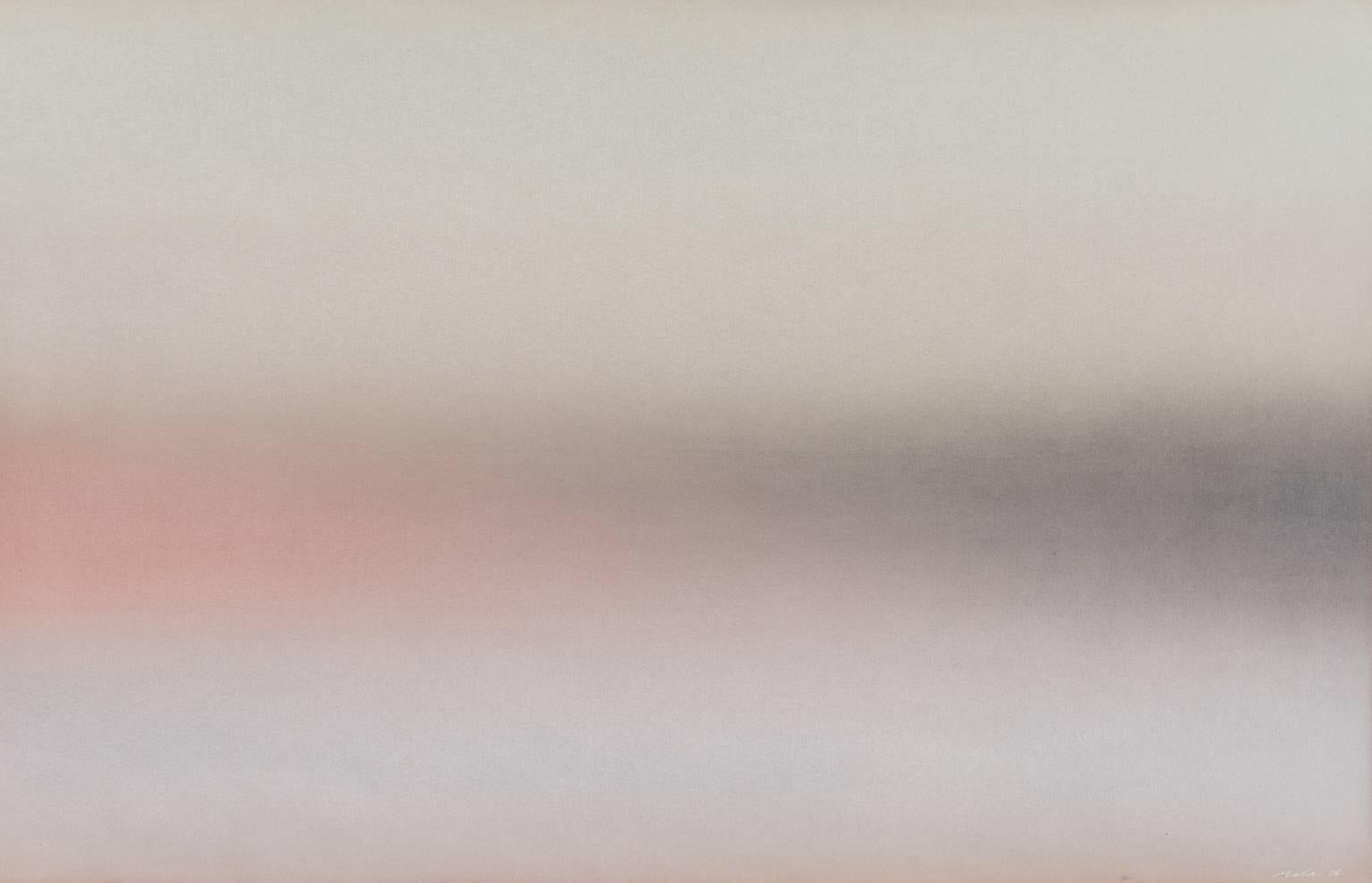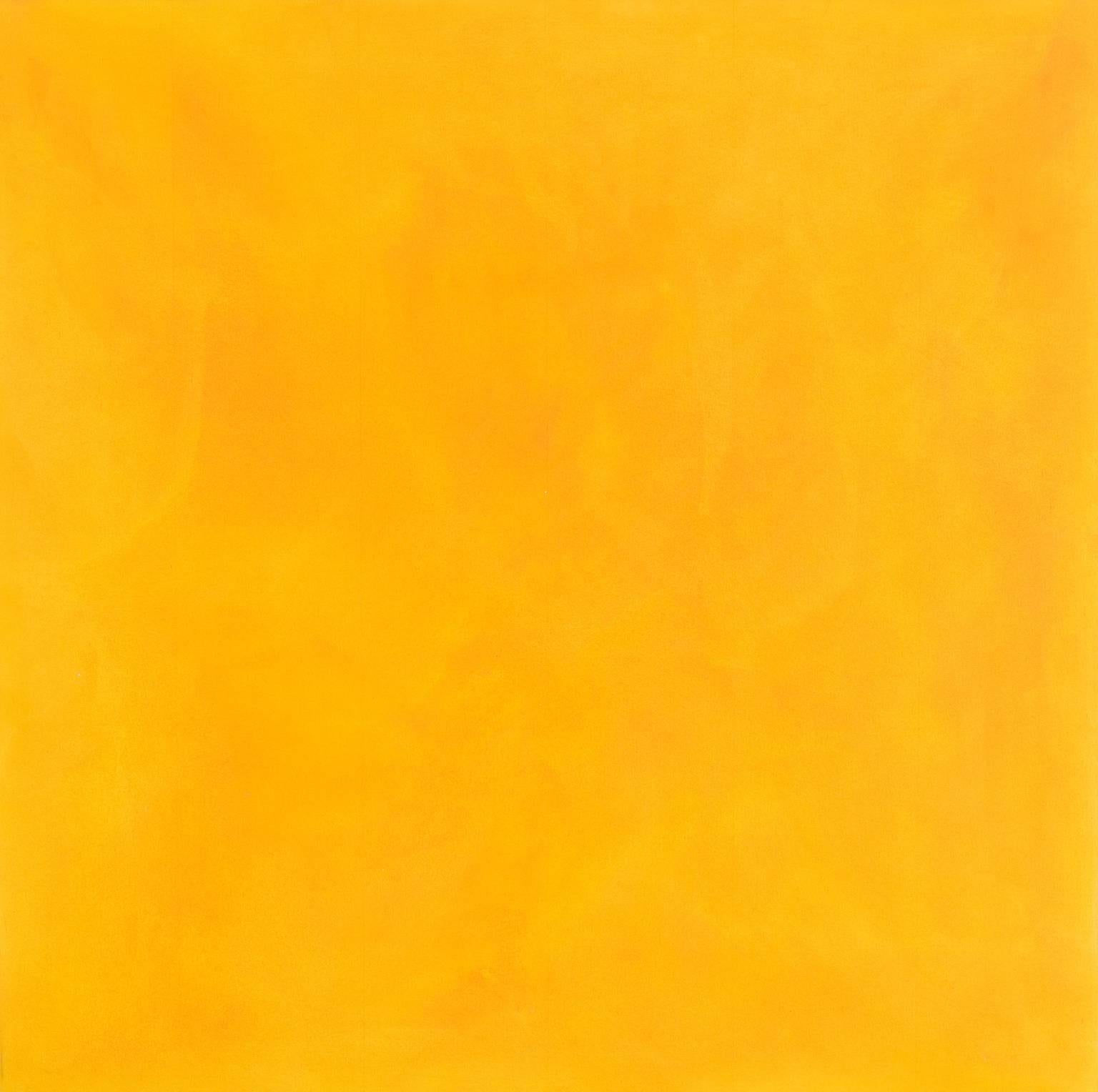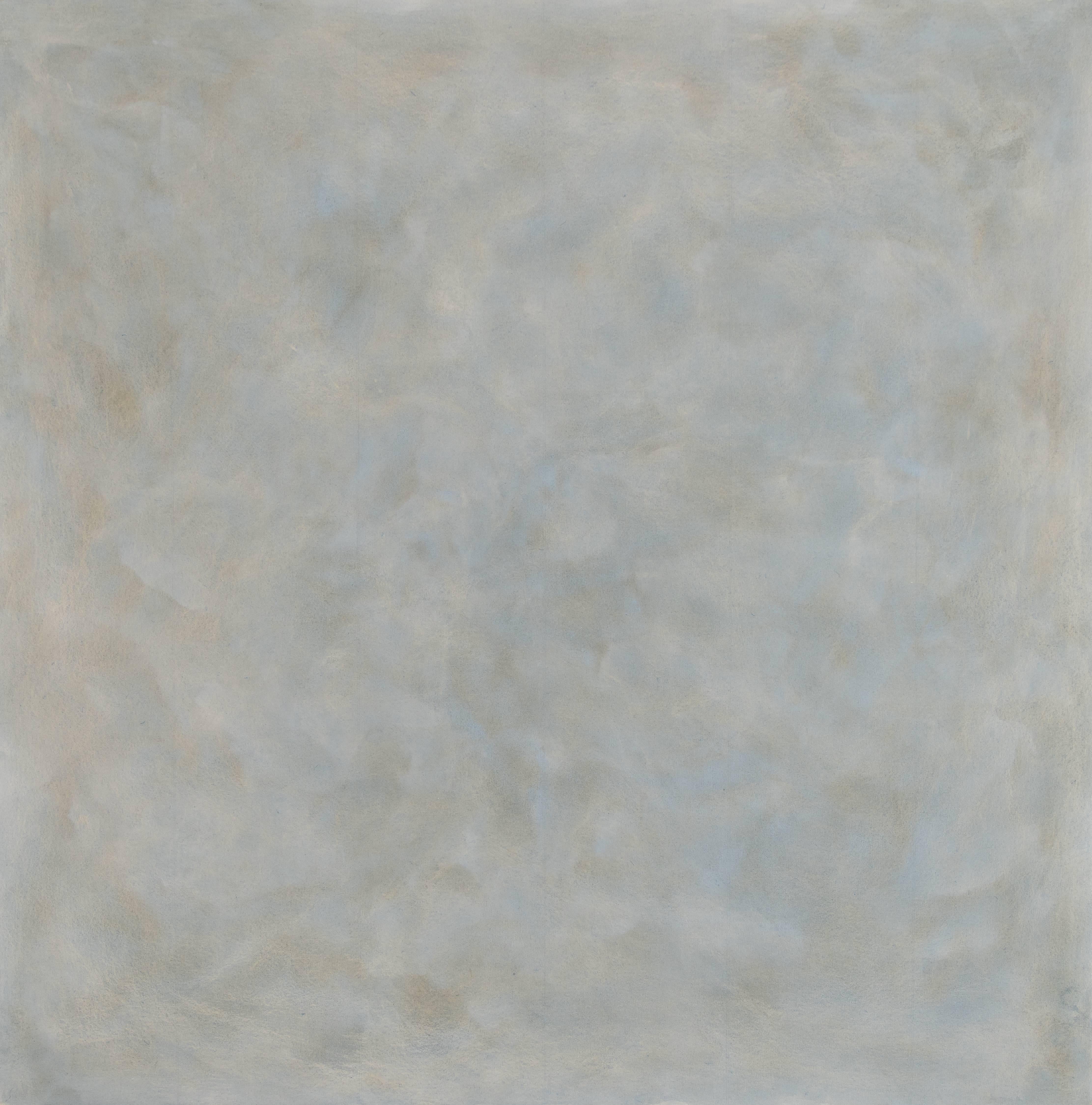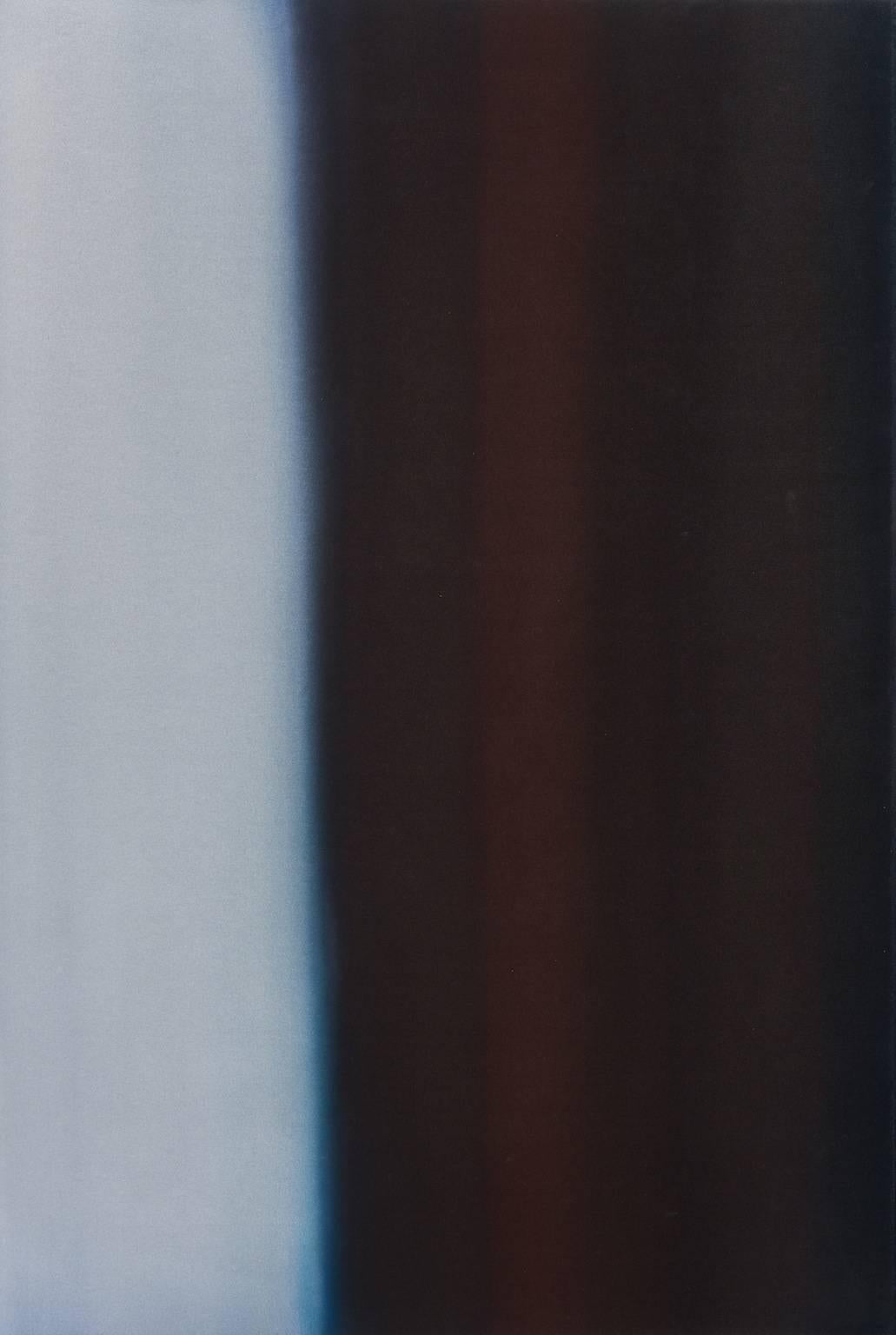Items Similar to "Nineteen" Thomas Downing, Purple Washington Color School Design, Shaped Canvas
Want more images or videos?
Request additional images or videos from the seller
1 of 8
Thomas Downing"Nineteen" Thomas Downing, Purple Washington Color School Design, Shaped Canvas1968
1968
About the Item
Thomas Victor Downing (1928 - 1985)
Nineteen, 1968
Acrylic on canvas
35 1/2 x 16 1/2 inches
Signed on the reverse
Provenance:
Estate of the artist
Henri Gallery, Washington, D.C.
Private Collection, Washington, D.C.
Thomas Downing was born in Suffolk, Virginia. In 1950, after graduating from Pratt Institute in New York City, he received a grant from the Virginia Museum of Fine Art to study in Europe. Upon returning from Europe, he settled in Washington, DC to teach at Catholic University. In 1954 Downing became a friend of Kenneth Noland, whose life drawing course he attended. From 1955 to 1956 Downing shared a studio with Howard Mehring, another artist who came to be identified with the Washington Color School. Downing had his first one-man show at the Washington Workshop Center for the Arts in 1959. That year, Downing, Mehring, and Betty Pajac founded Origio, a cooperative art gallery in Washington.
In 1959 Downing first began using the small dot in his work, a motif he explored fully into the 1970s. In the early works colorful dots determined the structure of the painting in their size, position, and repetition within a grid. Often there was a sense of concentration and expansion of the composition from the center to the edge of the canvas, achieving a visual impression of expanding open space. Looking for the fusion between the grid and color, Downing eliminated overlapping dots in 1962. The dots arranged in grids seem to project from the canvas surface, giving the impression the color floats unrestricted by the square format of his paintings.
Downing’s position in the Washington Color School came from his consistent approach to color. The canvas was the receptacle of color, on which Downing often worked in tonal modulations of a hue. Downing developed shaped canvases in 1966 as a structural solution to his deeper consideration of the “spatial definition” of color. After first working in a parallelogram shape, Downing next worked in chevron-shaped canvases that examined the illusionistic qualities of color. He exhibited these works in a solo exhibition at the Corcoran Gallery in 1966-1967 and later at the Allan Stone Gallery in New York in 1967. Downing’s second series of shaped canvases titled Folds were created in 1968. In the Fold series he discovered a new effect of relief and spatial depth within a flat work that could be enhanced by color. The projections and folding in the Fold paintings suggest the paintings exist in a world without gravity.
Downing exhibited in a group show at Jefferson Place Gallery in 1960 and had his first solo exhibition there in the spring of 1961. Downing had solo exhibitions in New York at Allan Stone Gallery in 1962, 1967, and 1968. He also had solo exhibition in New York at Stable Gallery in September 1963 and January 1965. In the early 1970s Downing had regular solo exhibitions at the Pyramid Galleries in DC.
In the 1960s Downing was included in important museum exhibitions, including: Post Painterly Abstraction at Los Angeles County Museum of Art, 1964 (Clement Greenberg curated and included three of Downing’s dial paintings); The Responsive Eye at the Museum of Modern Art, 1965; Colorists, 1950-1965 at the San Francisco Museum of Art, 1965; Systemic Painting at the Solomon R. Guggenheim Museum, New York, 1966; and Color Field Painting at the Philadelphia Museum of Art in 1970. Thomas Downing: Recent Paintings was held at the Corcoran Gallery of Art in December 1966 - January 1967. A solo exhibition of his paintings from 1962 to 1968 was held at the La Jolla Museum of Art then travelled to the Phoenix Art Museum in 1968. Downing had a solo exhibition at the Phillips Collection in 1985.
Downing taught at the Corcoran School of Art and Design, Washington, DC from 1965 to 1968. There he was influential for the next generation of DC color artists including Sam Gilliam. He moved to New York in 1970 and taught at the School of Visual Arts. He then accepted a position at the University of Houston, Texas in 1975. Around 1976, Downing moved to Provincetown where he continued to paint until his death in 1985.
In 2007 Thomas Downing was included in Optic Nerve: Perceptual Art in the 1960s at the Columbus Museum of Art, Ohio and Lyrical Color: Morris Louis, Gene Davis, Kenneth Noland and the Washington Color School at the Phillips Collection, Washington, DC. In 2015, Downing’s painting Five, 1967 was featured in the Whitney Museum’s inaugural exhibition in their new space America is Hard to See.
Downing’s works are in many collections including the Whitney Museum of American Art, New York, NY; the Smithsonian American Art Museum, Washington, DC; the Hirshhorn Museum and Sculpture Garden, Washington, DC; the Phillips Collection, Washington, DC; the Harvard Art Museums, Cambridge, MA; the North Carolina Museum of Art, Raleigh, NC; the Norton Simon Museum, Pasadena, CA; the Oklahoma City Museum of Art, OK; and the Virginia Museum of Fine Arts, Richmond, VA.
- Creator:Thomas Downing (1928-1985, American)
- Creation Year:1968
- Dimensions:Height: 35.5 in (90.17 cm)Width: 16.5 in (41.91 cm)
- Medium:
- Movement & Style:
- Period:
- Condition:
- Gallery Location:New York, NY
- Reference Number:1stDibs: LU184129923592
Thomas Downing
Thomas Downing was born in Suffolk, Virginia. In 1950, after graduating from Pratt Institute in New York City, he received a grant from the Virginia Museum of Fine Art to study in Europe. Upon returning from Europe, he settled in Washington, DC to teach at Catholic University. In 1954 Downing became a friend of Kenneth Noland, whose life drawing course he attended. From 1955 to 1956 Downing shared a studio with Howard Mehring, another artist who came to be identified with the Washington Color School. Downing had his first one-man show at the Washington Workshop Center for the Arts in 1959. In 1959 Downing first began using the small dot in his work, a motif he explored fully into the 1970s. Downing’s position in the Washington Color School came from his consistent approach to color. The canvas was the receptacle of color, on which Downing often worked in tonal modulations of a hue. Downing developed shaped canvases in 1966 as a structural solution to his deeper consideration of the “spatial definition” of color. After first working in a parallelogram shape, Downing next worked in chevron-shaped canvases that examined the illusionistic qualities of color. He exhibited these works in a solo exhibition at the Corcoran Gallery in 1966-1967 and later at the Allan Stone Gallery in New York in 1967. Downing’s second series of shaped canvases titled Folds were created in 1968. In the Fold series he discovered a new effect of relief and spatial depth within a flat work that could be enhanced by color. The projections and folding in the Fold paintings suggest the paintings exist in a world without gravity. Downing exhibited in a group show at Jefferson Place Gallery in 1960 and had his first solo exhibition there in the spring of 1961. Downing had solo exhibitions in New York at Allan Stone Gallery in 1962, 1967, and 1968. He also had solo exhibition in New York at Stable Gallery in September 1963 and January 1965. In the early 1970s Downing had regular solo exhibitions at the Pyramid Galleries in DC. Downing taught at the Corcoran School of Art and Design, Washington, DC from 1965 to 1968. There he was influential for the next generation of DC color artists including Sam Gilliam. He moved to New York in 1970 and taught at the School of Visual Arts. He then accepted a position at the University of Houston, Texas in 1975. Around 1976, Downing moved to Provincetown where he continued to paint until his death in 1985. In 2007 Thomas Downing was included in Optic Nerve: Perceptual Art in the 1960s at the Columbus Museum of Art, Ohio and Lyrical Color: Morris Louis, Gene Davis, Kenneth Noland and the Washington Color School at the Phillips Collection, Washington, DC.
About the Seller
5.0
Platinum Seller
These expertly vetted sellers are 1stDibs' most experienced sellers and are rated highest by our customers.
Established in 2021
1stDibs seller since 2022
63 sales on 1stDibs
Typical response time: <1 hour
- ShippingRetrieving quote...Ships From: Larchmont, NY
- Return PolicyA return for this item may be initiated within 3 days of delivery.
More From This SellerView All
- "Eleven Thirteen, (Dancing Line Series), " Elliott Thompson, Color Field AbstractLocated in New York, NYElliott Thompson Eleven Thirteen, (Dancing Line Series), 1972 Signed, Elliott Thompson, dated, 2/72, and inscribed, Eleven Thirteen, on verso and agai...Category
1970s Color-Field Abstract Paintings
MaterialsCanvas, Tape, Acrylic
- “Untitled.” Gabriele Evertz, Geometric Color Field, Bright RainbowLocated in New York, NYGabriele Evertz Untitled, 1993 Acrylic on canvas 48 x 48 inches Provenance: The artist Private Collection, Long island (acquired from the above) G...Category
1990s Color-Field Abstract Paintings
MaterialsCanvas, Acrylic
- "Burnt Orange Seams" Gerome Kamrowski, Color Field, Abstract ExpressionismBy Gerome KamrowskiLocated in New York, NYGerome Kamrowski Burnt Orange Seams, 1979 Acrylic on canvas 30 x 24 inches Gerome Kamrowski was born in Warren, Minnesota, on January 19, 1914. In 1932 he enrolled in the Saint Paul...Category
1970s Color-Field Abstract Paintings
MaterialsFoam, Mixed Media, Acrylic, Board
- "Untitled, " Jay Rosenblum, Hard-Edge Color Field, Colorful Horizontal StripesBy Jay RosenblumLocated in New York, NYJay Rosenblum (1933 - 1989) Untitled, 1973 Acrylic on canvas 54 x 128 inches Signed twice and dated on the reverse Provenance: Private Collection, Long Island Jay Rosenblum experim...Category
1970s Hard-Edge Abstract Paintings
MaterialsCanvas, Oil, Acrylic
- "Inside the Black Diamond, " Lila Katzen, Pop Art, Color Field Female AbstractLocated in New York, NYLila Katzen Inside the Black Diamond, 1964 Signed, titled, and dated on the reverse Acrylic on canvas 30 x 24 inches Lila Katzen said of her pieces in all media: “I feel marvelous w...Category
1960s Pop Art Abstract Paintings
MaterialsCanvas, Acrylic
- "Black Whole, " Jay Rosenblum, Color Field Abstract with StripesBy Jay RosenblumLocated in New York, NYJay Rosenblum Black Whole Signed and titled on the reverse Acrylic on canvas 18 x 32 inches Jay Rosenblum experimented with different versions of the "Visual Stripe motif" for more ...Category
1970s Abstract Abstract Paintings
MaterialsCanvas, Acrylic
You May Also Like
- 1976 (7)By Mala BreuerLocated in Phoenix, AZacrylic on canvas Mala Breuer grew up attending classes in painting and drawing from a young age at the California College of Arts and Crafts. After high school she attended the, no...Category
1970s Color-Field Abstract Paintings
MaterialsCanvas, Acrylic
- 12.1.98By Mala BreuerLocated in Phoenix, AZacrylic on canvas Mala Breuer grew up attending classes in painting and drawing from a young age at the California College of Arts and Crafts. After high school she attended the, no...Category
1990s Color-Field Abstract Paintings
MaterialsCanvas, Acrylic
- 3.10.99By Mala BreuerLocated in Phoenix, AZacrylic on canvas Mala Breuer grew up attending classes in painting and drawing from a young age at the California College of Arts and Crafts. After high school she attended the, no...Category
1990s Color-Field Abstract Paintings
MaterialsCanvas, Acrylic
- 4.4.99By Mala BreuerLocated in Phoenix, AZacrylic on canvas Mala Breuer grew up attending classes in painting and drawing from a young age at the California College of Arts and Crafts. After high school she attended the, no...Category
1990s Color-Field Abstract Paintings
MaterialsCanvas, Acrylic
- 9.77By Mala BreuerLocated in Phoenix, AZMala Breuer grew up attending classes in painting and drawing from a young age at the California College of Arts and Crafts. After high school she attended the, now, San Francisco A...Category
1970s Color-Field Abstract Paintings
MaterialsCanvas, Acrylic
- Glide - large, purple, pink, hues, striped, abstract, acrylic on shaped canvasBy Milly RistvedtLocated in Bloomfield, ONGradient bands of washed violet turn to dust rose in this shaped canvas from 1968 by Milly Ristvedt. From the first part of her career, this powerful painting is rooted in the tenets...Category
1960s Color-Field Abstract Paintings
MaterialsCanvas, Acrylic






